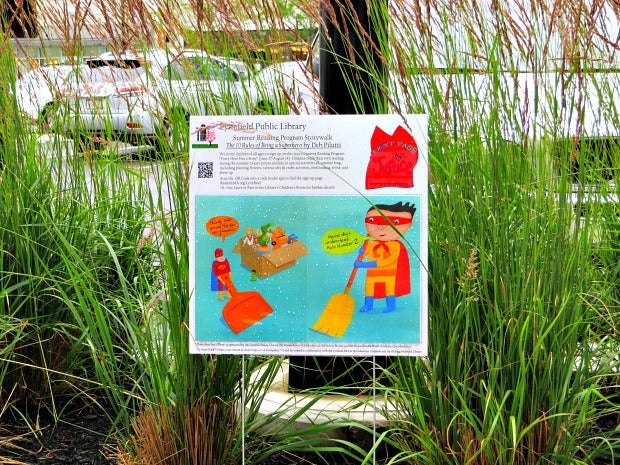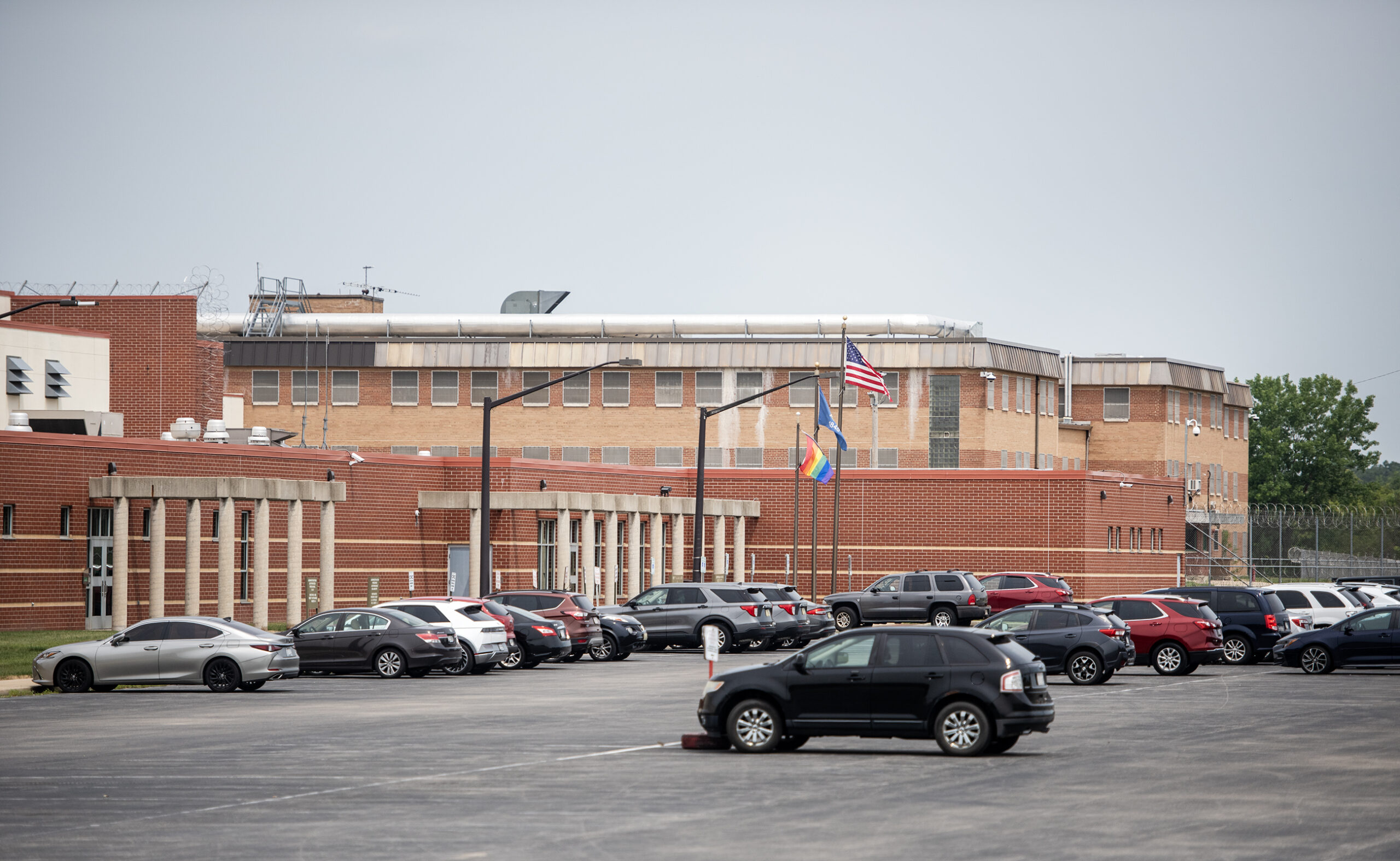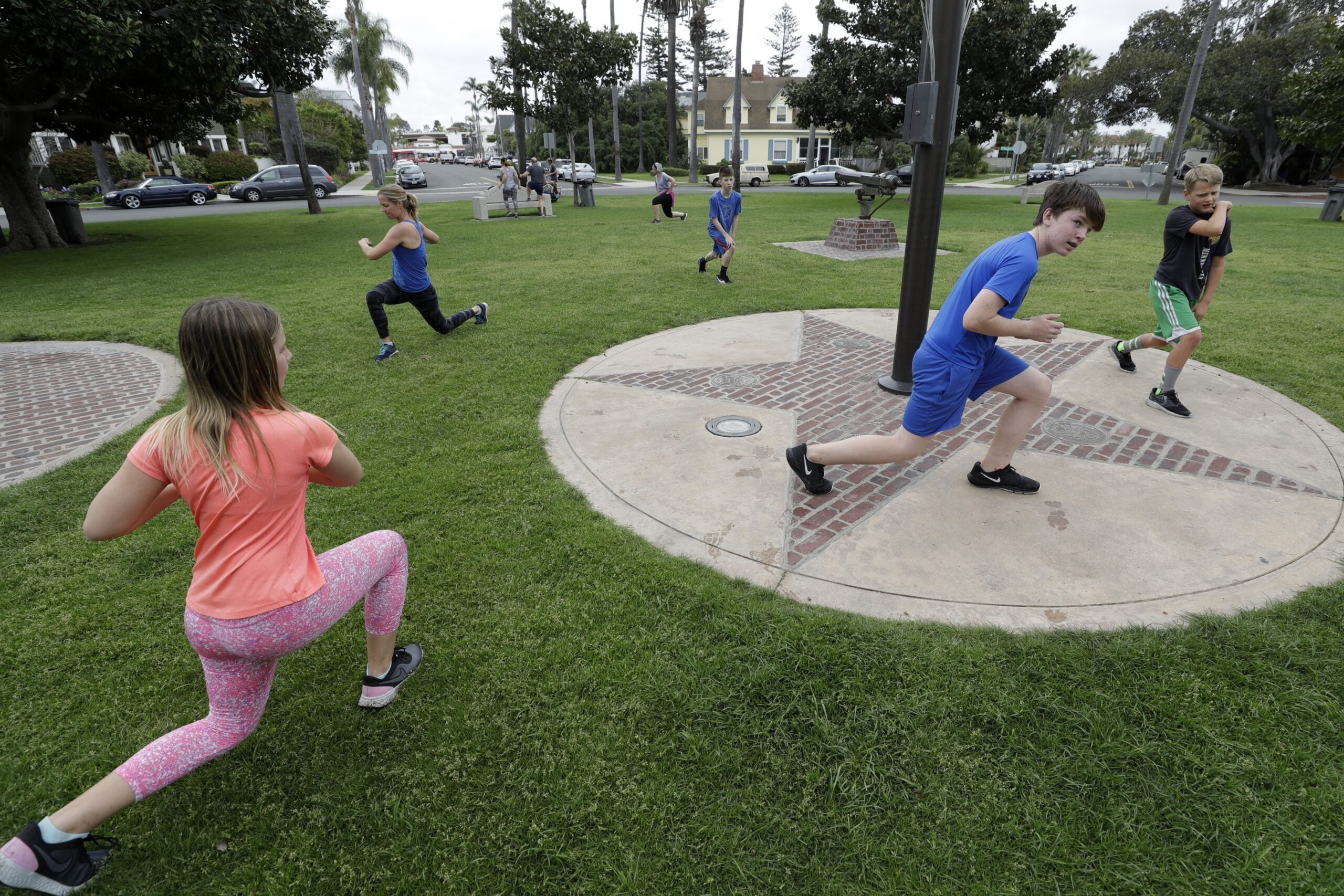This summer, parents in Crawford County who want to help their children increase their physical outdoor activity can take them on literary walking tours — and help their communities achieve better health outcomes.
Healthy Roots of Crawford County, a community-based health coalition, is partnering with five libraries to install a StoryWalk path. It’s a series of walkable routes that feature sign posts adorned with pages from children’s books. Families will walk a set path and, at each post, read a new page from the book. The incentive is twofold: Families will read and walk together, improving literacy and increasing physical activity. The pages of the books will be weather proof and interchangeable, so families can read different books throughout the year.
A collaborative effort by University of Wisconsin-Extension Crawford County and other community partners, Healthy Roots develops activities to promote the health and well-being of county residents. Using assessments, community-based knowledge and local partnerships, the project has initiated efforts to reduce health disparities by promoting active schools and communities, supporting healthy food options for kids and families, and developing county resource guides and health-related events.
Stay informed on the latest news
Sign up for WPR’s email newsletter.
This coalition has grown out of a national effort to explore ways to reduce obesity among 4-year-olds living in rural areas. According to federal data from 2009, 13.6 percent of Wisconsin’s rural, low-income 4-year-olds were obese. In 2011, UW-Extension, in partnership with six other Midwestern Extension services, used a five-year, U.S. Department of Agriculture initiative to launch the Communities Preventing Childhood Obesity project and study how best to reduce obesity among children in rural, low income settings. Researchers looked to 14 existing community-based health coalitions, two in each state, to improve nutrition and physical activity environments. Healthy Roots and another coalition in Iron County, Eating Healthy and Physical Activity Coalition of the Gogebic Range, were selected in Wisconsin.
Communities Preventing Childhood Obesity focuses its work in the physical and social environments in which 4-year-old children live, go to school and play. This emphasis aligns with policy, systems and environmental influences that affect health and well-being. These influences prompt policymakers, health care workers, city planners, community developers and public health advocates to pay particular attention to aspects of peoples’ lives that directly influence health, such as the kinds of foods they eat, and indirectly influence health, such as the availability of sidewalks to safely navigate through a neighborhood or town.
As policy, systems and environmental efforts focus on community-level changes in health, communities play a large role in advancing these initiatives. According to the American Journal of Public Health, community-based initiatives can be categorized in four ways.
Communities As Settings In Which Change Occurs
Community can be defined by its geographic setting — whether it is urban, rural or suburban. Settings within those broad geographic areas, such as neighborhoods or even single blocks, can also define a community. Crawford County is the setting in which Healthy Roots operates. The coalition focuses on cities and towns within the county through activities like StoryWalk.
Communities As Targets Of Change
An entire community can be the target of an effort to improve health outcomes. As bicycle trail networks expand across Iron County, its Eating Healthy and Physical Activity Coalition of the Gogebic Range encouraged residents to use the trails to bike safely. The coalition also started a book club that encouraged county residents to check out “Bikenomics” from their local library. The book promotes bicycling as a means for improving a family’s financial security and a community’s economy, issues of great importance in Iron County, which is struggling with economic development.
Communities As Resources For Achieving Change
Communities addressing health disparities like obesity are keenly aware of how geographic and social settings influence individuals, organizations and institutions. Community coalitions often comprise members who possess different knowledge and access to resources to improve health outcomes. In Crawford and Iron counties, coalition members offer public health, government and education-based perspectives, and all bring their own experiences, knowledge and partnerships to the table to collectively understand and address the impacts obesity has on their youngest residents.
Communities As Agents Of Change
Communities naturally act as agents of change, building on knowledge residents and leaders gain through daily living and formal evaluation of public programs to better understand how contexts, resources and partnerships can improve health. Community-based health coalitions in Crawford and Iron counties bring together members of the communities to ensure residents have access to healthy physical activity and nutrition environments. Healthy Roots and Iron County’s Eating Healthy and Physical Activity Coalition of the Gogebic Range have been agents of change by providing Head Start centers in their respective communities with garden supplies, plants, and educational resources for child care workers and children to learn about and experience growing their own healthy foods.
While these four categories are helpful in thinking through different ways communities tackle health problems, many community-based health initiatives, especially those led by coalitions like Healthy Roots and Eating Healthy and Physical Activity Coalition of the Gogebic Range, are some combination of setting, target, resource and agent of change. Wisconsin residents interested in learning about or starting similar programs in their communities can contact their local UW-Extension offices.
Research shows that community-based health coalitions can positively affect community health by increasing the ability of individuals, organizations and systems to better collaborate to creatively address disparities. In Crawford County, adults and children can spend time together this summer walking outside and reading a new story.
Editor’s Note: Rachel Glaza is project director of the Communities Preventing Childhood Obesity Project with the University of Wisconsin-Extension’s Family Living Programs.
This report was produced in a partnership between Wisconsin Public Radio, PBS Wisconsin and the University of Wisconsin Cooperative Extension. @ Copyright 2024, Board of Regents of the University of Wisconsin System and Wisconsin Educational Communications Board.





